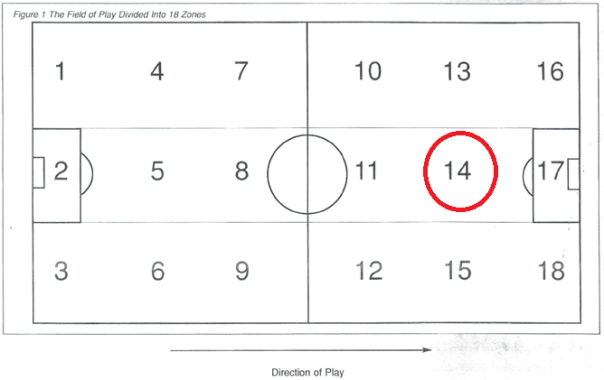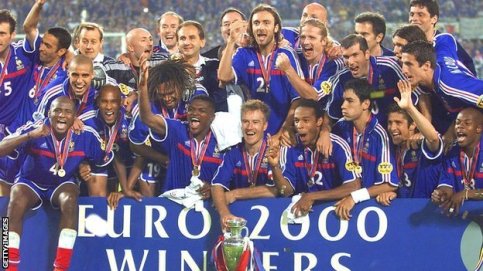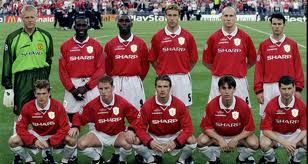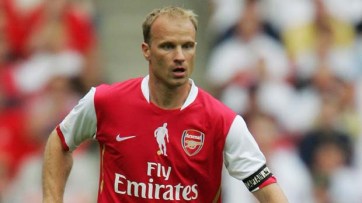What is “Zone 14” in football?
Through the introduction of football performance analysis, football games has been analysed in many ways. Zone 14 was classified as the “golden square” in the pitch which helps teams score more goals. It was supported by evidences showing that successful teams had a better performance in zone 14. In this post, the two examples used would be France (1998-2000) and Manchester United (1998-1999).
Where is Zone 14?
By dividing the field into a six-by-three grid, there are 18 zones on the pitch. Zone 14 is the zone located in the middle of the pitch immediately outside the penalty area appears crucial for goal scoring (Taylor et al., 2002). It is shown in the following diagram.
The location of Zone 14 (Grant et al., 1998)
Why is Zone 14 so important?
It is one of the key factors to differentiate the successful and unsuccessful teams (Grant et al., 1998). Other researchers had the same result showing that successful teams attack through the centre of the field more effectively than less successful teams (Grant, 2000; Horn and Williams, 2002).
Generally, there are 4 key points that successful teams were found to play in Zone 14:
- More passes to all zones to the side and ahead of zone 14 (Horn et al., 2002)
- More forward passes from and within zone 14 (Horn et al., 2002)
- To make more passes in zone 14 compared with unsuccessful teams (Grant et al., 1998)
- To generate attempts on goal from possession regained in zone 14 (Horn et al., 2002)
The first example is France national team (1998-2000). In July 2000, France became the first nation to win the European Championship (2000) as World Champions (1998).
France National Team in Euro 2000 (BBC Sport, 2012)
It was found that 81.3% of their assists in two competitions came from the central area (Horn et al., 2000). In other words, France’s attacking play was narrow. Another finding showed that the majority of France’s attempt at goal came from assists in central attacking area just outside the penalty area (Horn et al., 2000).
The second example is Manchester United FC (1998-99), which was the first English side to win Premiership, F.A. Cup and European Champions League in the same season.
Manchester United 1999 (Sawh, 2010)
Grant and Williams (1999) did a research on this team and found that passing was the most common form of assist. Moreover, the majority of passing assists came from central attacking area.
What is Zone 14?
The above findings gave a brief idea what zone 14 is. Different researches have their own view but generally their opinions were very similar. Grant et al. (1998) argued that Zone 14 is the attacking midfielder area which is the crucial area for producing successful attack. Horn et al. (2000) and Taylor et al. (2002) both argued that Zone 14 is the key area which produces vast majority of passing assist. Grant and Williams (1999) did not mention zone 14 but they found that passing is the most common form of assist and the majority of passing assists came from central attacking area. In fact, some coaches know the importance of this zone but they refer it by using another name “The Hole”. However, from the perspective of performance analysis, the researchers had brought forward the understanding of how it works (Telegraph, 2002), which is shown in the following paragraph.
How to use Zone 14 effectively?
Effective use of Zone 14 must be combined with positive, forward passing and tight possession from the back of the field (Telegraph, 2002). The keywords are “positive, forward passing” which lead to the next question “where the ball should be passed?” According to the Horn et al. (2002), teams were more than 4 times more likely to score goals by playing directly into the penalty area than playing laterally to the wings. In other words, fewer goals would be scored through possession leaving zone 14 to the wide areas. Possession time is another reason why the ball leaving zone 14 should be passed into the penalty area directly. Horn et al. (2002) found that the ball was kept in zone 14 for 2.7 seconds in average in order to score a goal. If the possession lasts over 8 seconds, then it won’t produce an attempt on goal. That means quick attack is a key point in using zone 14. No doubt, moving the ball laterally rather than forward into the penalty area is likely to introduce more passes and longer time in possession, then the threat of zone 14 would be neutralised.
Who is Zone 14 for?
The zone 14 is effective only when exploited by a skilful player who can quickly change the direction of attack with a short pass or twisting run lasting no more than 8 seconds (Horn et al., 2002). Therefore, the players with the ability to play in zone 14 are highly technical. They should be the players that were regarded as the most exciting to watch. Grant et al. (1998) mentioned Zidane and Bergkamp as examples.
Zinedine Zidane (Rascojet, 2011)
Here is an example showing Zidane’s play in Zone 14:
Dennis Bergkamp (The FA, 2013)
Here is an example showing Bergkamp’s play in Zone 14:
Balance
Although Zone 14 is so important in attacking, it doesn’t mean that teams should not make crossing from both flanks. Crossing is a very effective way to produce goals also. In fact, Grant (2000) found that successful teams are effective at using crosses to score goals. The key point is that teams should avoid using zone 14 to attack wide areas, which is proved in previous findings. Instead of using short wide passes from zone 14, teams should switch the ball across the whole field, or move the ball forward all the way down one side to attack flanks and make crossing (Horn et al., 2002). In the example of Manchester United (1998-99), it was found that the team was able to make flank attack and have the ability to penetrate through central attacking area (Grant and Williams, 1999). In the France team (1998-2000), their attacking play was very narrow so there were not many crossing assists.
Conclusion
Zone 14 is located outside the penalty area. It is a factor to differentiate successful and unsuccessful teams because it provides most assist. The most effective way to use zone 14 is to make a forward passing into the penalty area. Moreover, the attacking play should be quick. The possession in zone 14 should not be more than 8 seconds. The importance of flanks attack should not be ignored because a successful team should be able to make both attacking styles.
In my opinion, the best way is to attack through zone 14 first as it is more effective. If they can’t penetrate through the central attacking area, then they attack the wide areas.
References
BBC Sport, 2012. Euro 2000: The French Revolution [digital image] [viewed 17 August 2013]. Available from: http://news.bbcimg.co.uk/media/images/60195000/jpg/_60195604_81575581.jpg
GRANT, A. & WILLIAMS, M., 1999. Analysis of the Final 20 matches played by Manchester United in the 1998-99 season. Insight, 1(3), 42-44
GRANT, A., 2000. Ten Key Characteristics of Successful Team Performance. Insight, 3(4), 26-27
GRANT, A., T. REILLY, M. WILLIAMS & A. BORRIE, 1998b. Analysis of the Successful and Unsuccessful Teams in the 1998 World Cup. Insight, 2(1), 21-23
HORN, R. & M. WILLIAMS, 2002. A Look Ahead to World Cup 2002: What Do the Last 40 Years Tell Us? Insight, 5(2), 26-29
HORN, R., M. WILLIAMS & A. GRANT, 2000. Analysis of France in World Cup 1998 and Euro 2000. Insight, 4, 40-43
HORN, R., WILLIAMS, M., & ENSUM, J., 2002. Attacking in Central Areas: A Preliminary Analysis of Attacking Play in the 2001/2002 F.A. Premiership Season. Insight, 5(3), 31-34
Rascojet, 2011. Zidane [digital image] [viewed 17 August 2013]. Available from: http://www.rascojet.com/blog/wp-content/uploads/2011/01/Zidane.jpg
Sawh, M., 2010. manchester_united_1999 [digital image] [viewed 17 August 2013]. Available from: http://sackthemanager.files.wordpress.com/2012/01/manchester_united_1999_cham.jpg
TAYLOR, S., J. ENSUM & M. WILLIAMS, 2002. A Quantitative Analysis of Goals Scored. Insight, 5(4), 28-31
The FA, 2013. dennis-bergkamp-testimonial [digital image][viewed 17 August 2013]. Available from: http://www.thefa.com/~/media/Images/TheFAPortal/News%20Articles/2013/dennis-bergkamp-testimonial.ashx?w=620&h=349&c=facupgallery&as=1
THE TELEGRAPH, 2002. Scientists find football’s golden square [online]. Available from: http://www.telegraph.co.uk/sport/football/3028353/Scientists-find-footballs-golden-square.html
Posted on 19/08/2013, in Football and Science and tagged Bergkamp, France, Manchester United, Zidane, Zone 14. Bookmark the permalink. 9 Comments.






This is my first time go to see at here and i am actually pleassant to read everthing at one place.
Спасибо за обмен своими мыслями о% meta_keyword%.
С уважением
I see your site needs some fresh articles. Writing manually is time consuming,
but there is solution for this hard task. Just search for;
Miftolo’s tools rewriter
Pingback: Football Basics – Crossing | Football Performance Analysis
Pingback: 足球場上的“区14”(Zone 14) 是什么?
Pingback: Futebol – Zona 14: O que é? Importância? · Desporto&Esport
Pingback: Middlesbrough, Game States and Zone 14 | stats and snakeoil
Pingback: How to Get the Most from Hoesen – Quakes Epicenter
Pingback: Aston Villa 1-0 Arsenal: By the numbers - Arseblog News - the Arsenal news site